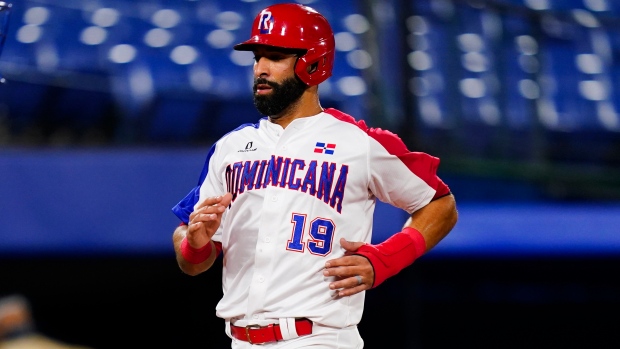Aug 6, 2021
Olympic baseball a cross between Double-A and Old-Timers Day
Imagine Olympic swimming without the world’s top 100. Or track and field missing the 100 strongest and fastest. Or gymnastics, if the 100 most talented weren’t on hand. That’s what the Olympic baseball tournament is, largely a cross between Double-A ball and Old-Timers Day.
The Canadian Press

YOKOHAMA, Japan (AP) — Imagine Olympic swimming without the world’s top 100. Or track and field missing the 100 strongest and fastest. Or gymnastics, if the 100 most talented weren’t on hand.
That’s what the Olympic baseball tournament is, largely a cross between Double-A ball and Old-Timers Day.
If acronyms are essential to the Olympics, DFA is as significant as IOC.
Many of the players had been designated for assignment, baseball lingo for removed from a 40-man Major League Baseball roster prior to an unconditional release.
There was a diamond talent level far below that displayed at the MLB Futures Game in Denver on July 11, where Washington’s Cade Cavalli and the Yankees Luis Medina both topped 100 mph.
Pitchers did reach triple digits at the Olympics, but that’s because the Yokohama Stadium scoreboard lists kph in addition to mph.
That’s not to say the athletes on the six teams are untalented. They are extremely skilled. But almost all of them are not among the best 1,200 or so baseball players in the world. Is this the type of competition the Olympics should want?
Tampa Bay prospect Shane Baz, who pitched in the Futures Game before heading to Japan, was the most prominent young pitcher, followed by Minnesota’s Joe Ryan, traded on the eve of the tournament in the deal that brought Nelson Cruz to Tampa Bay.
Other than Anthony Gose, whose last big league pitch was five years ago, and Jumbo Diaz, whose last was in 2017, they were the hardest-throwers. Most failed to reach the 95 mph-plus level of top college pitchers such as Jack Leiter. Several maxed out in the upper 80s.
Yes, there were a handful of Olympians who can play at a major league level. Masahiro Tanaka could have remained in MLB this year, and Yoshinobu Yamamoto, a 22-year-old right-hander with the Pacific League’s Orix Buffaloes, looks ready. Kodai Senga, a 28-year-old hard-throwing right-hander with the Fukuoka SoftBank Hawks, could be major league late-innings material.
And Scott Kazmir pitched like his 37-year-old body is responding in a manner that could get him back to the big leagues.
But much of the rosters were stocked with middling minor leaguers. Or several even further removed: Pittsburgh Pirates front office analyst Jeremy Bleich, who last pitched professionally in 2019, was on Israel’s pitching staff along with Shlomo Lipetz, who has a day job at New York’s City Winery. Their performances were admirable but far different than the elite athletes competing in other sports.
Big league veterans included Todd Frazier, Edwin Jackson, David Robertson on the U.S., Oliver Perez and Adrian González on Mexico, José Baustisa and Melky Cabrera on the Dominican Republic, Ian Kinsler and Danny Valencia on Israel. They showed heart and commitment. They had big moments. But none appeared as if they could claim the final spot on a 26-man big league roster.
MLB excludes Shohei Ohtani, Mike Trout, Jacob deGrom and the other 40-man roster players from Olympic eligibility, Many general managers block prospects who technically are eligible, some worrying they might need them in case of injuries, others not wanting to risk their players outside of club farm teams.
Baseball and softball were dropped by the International Olympic Committee after the 2008 Beijing Games, left off for 2012 in London and 2016 in Rio de Janeiro, then brought back jointly for this year before getting dropped again for Paris in 2024. They hope to return for Los Angeles in 2028 and Brisbane, Australia, in 2032.
Softball, with the best that play that sport, deserves to stand on its own. The Olympics are their moment in the spotlight, and they deserve that platform to shine every four years.
Though the baseball tournament was filled with competitive, entertaining games, it was partly a showcase for players trying to earn big league roster spots. Is that an Olympic ideal?
___
More AP Olympics: https://apnews.com/hub/2020-tokyo-olympics and https://twitter.com/AP_Sports
